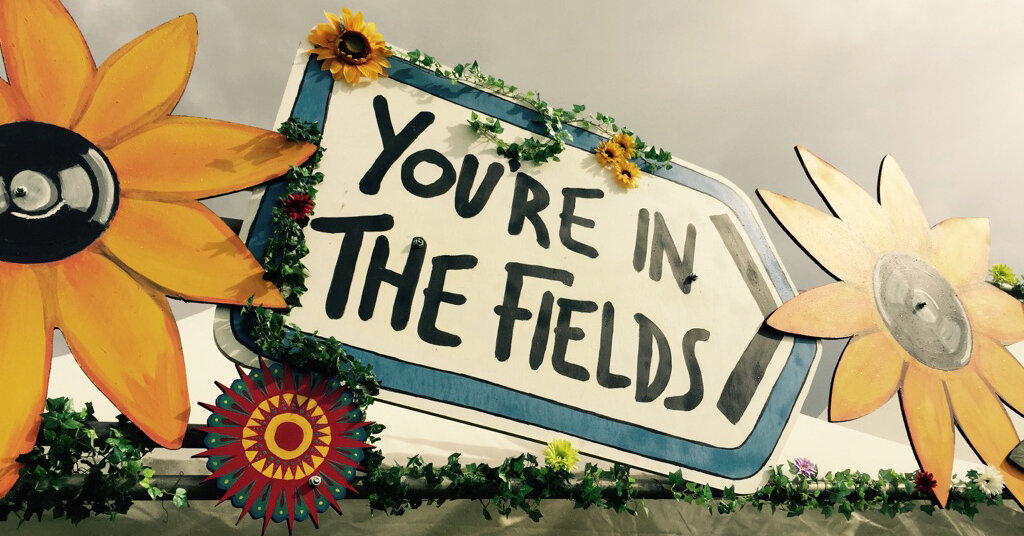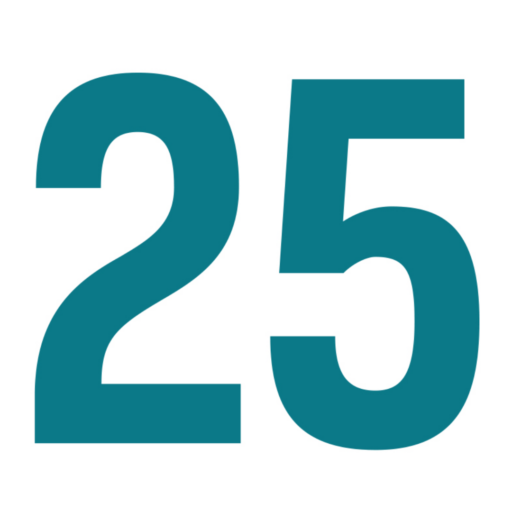Cordi Ashwell, director of Decordia, shares her 20 years of experience of designing, building and installing festival and venue architecture for events such as Parklife, Rewind, Tramlines, Truck, Y Not!, Snowbombing, Neighbourhood Weekender, Boardmasters and Bluedot – many of which have sustainability as a key priority.
Cordi giver her insights into creating sustainable signage, which stem from months of research, weighing up the pros and cons of different materials, including Correx, Foamex REELex and timber, and what event organisers should consider before making their final choices.
“Single use signage has been a major focus for us when looking into changes we can implement or encourage our clients to make. We have spent months researching new, more sustainable signage options and explored a few alternative versions of the signage process. Here’s what we’ve learnt so far:
CORREX: Correx is the cheapest (£2.30 for an A3 4mm sign) and most frequently used type of signage for festivals but it’s also the most likely type of sign to end up in landfill.
If not stored properly post-event, it can’t be reused for future events and correx is only accepted by certain types of recycling plants across the UK (recycling mark no. 5, i.e. Polypropylene, is not a raw material) creating a barrier for some, so the easy option is to put it in general waste.
The average lifespan of a correx sign should be two years. That’s two years of consistent use, not packed away in a container or a warehouse or constantly exposed to our lovely British weather.
So, let’s do some quick maths:
In theory a correx sign should be in use for: 2 years = 365 days x 2 = 730 days!
730 days divided by 10 days (which is the average time the sign might be used at each festival) = a lifespa of 73 festivals for each sign!
Realistically, details on your signs aren’t going to stay the same for 73 festivals (unless it’s for a toilet, entry or exit sign) and bad weather is also going to take some of your sign’s lifespan away too, so it probably won’t last as for 73 festivals.
But if you want to attempt to get 73 festivals worth of use out of a correx sign it really comes down to the de-rig. During de-rig have your team put signs away properly including using the correct materials to wrap it up – a brown strip of paper wrapped with masking tape will do the trick. The brown paper will stop the glue from the tape marking it. Don’t use gaffa tape or put masking tape directly onto the correx or it will get damaged. Store it flat, don’t use it to protect other items and don’t invest in bubble wrap. You don’t need more plastic to protect plastic as the material can preserve itself with the correct treatment. The bestcase scenario would be storing any correx signs in a box that matches the size of the signs and can be sealed.
Other things to consider before placing an order for your correx signage are: Where is the supplier based? Do all of their materials come from the UK? Is the sign manufactured in the UK and how far is it going to have to travel to be delivered to your site?
Always try and use suppliers as local to you as possible to reduce the carbon footprint of delivery or pick it up on your way to site if that’s possible.
Where correx is the only option, DECORDIA will be offering a service to each event where we take on the responsibility of stocktake, cleaning and storing any correx or foamex to save on re-orders the following year. As a very last resort, if the correx has reached the end of its (hopefully) long life, you can check whether your local authority accepts polypropylene products at its recycling facilities. Or we have linked up with a company who can chip it and turn it into animal bedding or new correx.

CORREX ALTERNATIVES
How long it lasts: A few weeks A3 Cost per sign: £4.26 (q. 100) / £7.45 (q. 50) / £17.05 (q. 20)
Details:
– Manufactured in Sweden
– 100% fibre based
– Made from up to 70% recycled content depending on calliper
– FSC certified
– Thickness between 0.83mm -2.2mm
How to dispose? Fully recyclable – easily recycled and reused, can be recycled up to 8 times. Compostable and Biodegradable – can be disposed of in normal paperboard waste stream and has EN 13432
The Sustainable Signage Co’s REELboard:
How long it lasts: At least 12 months (relatively new product so long term testing has not happened yet)
A3 Cost per sign: £10.03 (100 x 10 designs) / £12.93 (50 x 5 designs) / £21.35 (20 x 2 designs)
Details:
– Made from FSC certified trees in Norway and converted in the UK
– 100% plastic-free (with plastic-free certification mark)
– Kit 12+ barrier – grease resistant (with * aqueous barrier coating)
– COBB <10 water resistant
How to dispose? It is 100% biodegradable, widely recycled and repulpable by any paper/board mill. The Sustainable Signage Co can also take the signs back to be turned into corrugated card once you’ve finished with them.
TIMBER SIGNAGE: Compared to correx, timber signage is an investment (£15 for one A3 sign) but it is one worth making for any festival signs that do not need to change year on year. Depending on the type of timber used, it can last anywhere from 10 to 50+ years. It is much more durable than correx and can be dismantled, reused and stored much more easily. Some of the timber signage we made for Kendal Calling in 2010 is still being used now. So even though the short-term cost might be 85% more than it is for correx, it requires less maintenance and replacements over time, and can withstand the elements a lot better. In some cases correx needs to be attached to timber or other stronger backing material anyway to keep it sturdy and prevent bending, so why not just start with a fully timber sign in the first place instead of using double the materials?
Our timber supplier Irmass is PEFC and FSC certified and we make the signs by hand in our workshop in Manchester using various materials including screws, waterproof PVA for attaching extra shapes or 3D letters and emulsion paint coated with Screwfix’s No Nonsense Trade Floor Varnish. This is a 15-year tried and tested collection of materials that is budget friendly but most importantly, makes the signs really durable. The signs then travel with us to the festival sites saving on delivery impact and everything is then stored where the festival is based. 90% of the time our haulage is only ever one-way.
By moving towards more timber signage options, your signage naturally becomes seen as less disposable. Making steps towards positive change is about everyone reflecting on their behaviour and habits in those crucial moments when it’s so easy to reach for the convenient plastic option.
Before placing your next signage order, ask yourself the following questions:
– How long do you plan on using the sign? Will you use it for more than one year?
– If so, should you invest in timber?
– How will it be stored?
– Whose responsibility will it be to clean and store it?
– If it’s a one off sign that includes a specific brand or year and cannot be reused, how are you going to dispose of it? Does your local authority recycle the material?
– Where is your supplier based? Have you asked them where their materials come from?
– What is your printing timeline? Are you only printing correx signs for the quick turnaround?
We can’t wait to be back in the fields this summer! “
You can follow DECORDIA’S monthly sustainability objectives and progress HERE & keep up with the festivals they’ll be working on via instagram.
This guest blog originally appeared in our April 2021 Vision: 2025 newsletter. Sign up to receive monthly event sustainability news, case studies and guest blogs direct to your inbox using the form below.


